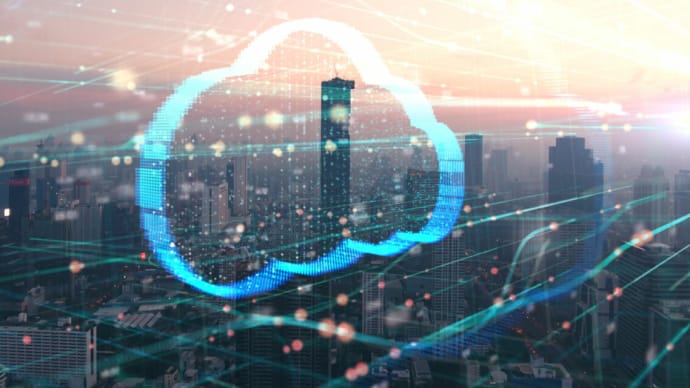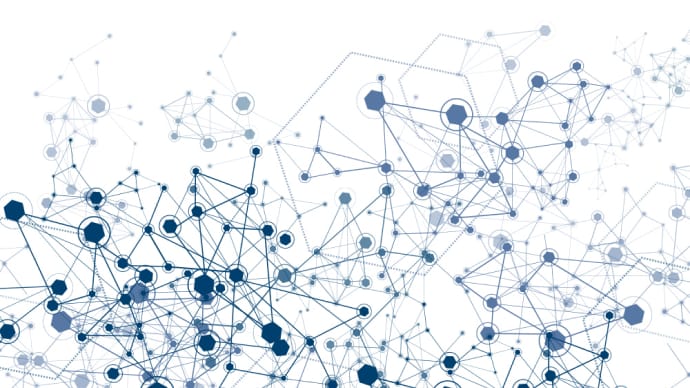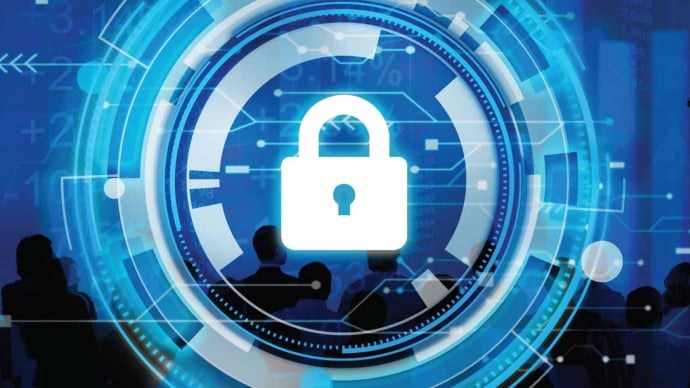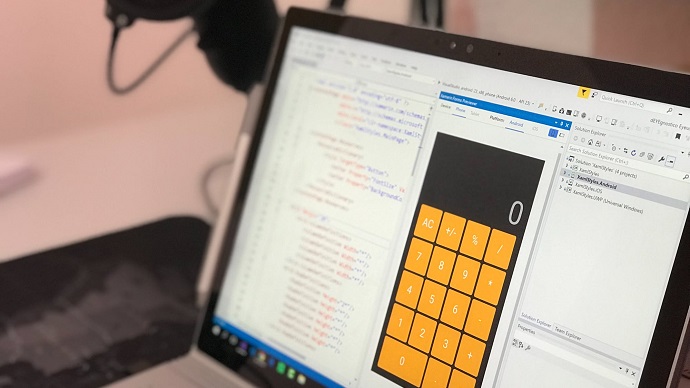
300-410: Implementing Cisco Enterprise Advanced Routing and Services (ENARSI)
PDFs and exam guides are not so efficient, right? Prepare for your Cisco examination with our training course. The 300-410 course contains a complete batch of videos that will provide you with profound and thorough knowledge related to Cisco certification exam. Pass the Cisco 300-410 test with flying colors.

Curriculum for 300-410 Certification Video Course
| Name of Video | Time |
|---|---|
 1. CCNP Enterprise Exam Overview |
8:00 |
 2. CCNP Enterprise Exam Question Samples |
8:00 |
| Name of Video | Time |
|---|---|
 1. 1_1 Dynamic Routing Protocols |
8:00 |
 2. 1_2 Network Technologies |
8:00 |
 3. 1_3 Connecting Remote Locations With HQs |
12:00 |
 4. 1_4 RIP (Router Information Protocol) |
10:00 |
| Name of Video | Time |
|---|---|
 1. 2_1 EIGRP Overview And Basic Configuration |
12:00 |
 2. 2_2 EIGRP Optimization |
17:00 |
 3. 2_3 EIGRP IPv6 Configuration |
1:00 |
 4. 2_4 EIGRP Named Mode |
10:00 |
 5. LAB - EIGRP Configuration |
15:00 |
| Name of Video | Time |
|---|---|
 1. 3_1 Single Area OSPF |
18:00 |
 2. 3_2 Multi Area OSPF |
10:00 |
 3. 3_3 OSPF Optimization |
9:00 |
 4. LAB - Basic OSPF Configuration |
18:00 |
 5. LAB - Advanced OSPF Configuration |
26:00 |
 6. 3_4 OSPFv3 |
6:00 |
| Name of Video | Time |
|---|---|
 1. 4_1 How To Use Multiple Routing Protocols |
3:00 |
 2. 4_2 Route Redistribution |
7:00 |
 3. LAB - Basic Redistribution Config |
15:00 |
 4. LAB -Advanced Redistribution Configuration |
16:00 |
 5. 4_3 Controlling Routing Update Traffic |
15:00 |
| Name of Video | Time |
|---|---|
 1. 5_1 CEF (Cisco Express Forwarding) |
2:00 |
 2. 5_2 Path Control |
10:00 |
 3. LAB - Policy Based Routing |
7:00 |
| Name of Video | Time |
|---|---|
 1. 6_1 Planning Enterprise Internet Connection |
4:00 |
 2. 6_2 Single Homed IPv4 Internet Connection |
2:00 |
 3. 6_3 NAT |
10:00 |
 4. 6_4 DHCP For IPv6 |
5:00 |
| Name of Video | Time |
|---|---|
 1. 7_1 BGP Basics And Applications |
5:00 |
 2. 7_2 Basic BGP Configuration |
17:00 |
 3. LAB - BGP Neighbor Configuration |
12:00 |
 4. 7_3 BGP Attributes and Best Path Selection |
5:00 |
 5. LAB - BGP Attributes |
8:00 |
 6. 7_4 Controlling BGP Routing Updates |
10:00 |
 7. 7_5 Configuring BGP For IPv6 Internet Connection |
3:00 |
 8. 7_6 Advanced BGP Configuration |
9:00 |
 9. BGP ROUTE REFLECTORS |
8:00 |
| Name of Video | Time |
|---|---|
 1. DMVPN Fundamentals |
10:00 |
 2. GRE - mGRE |
11:00 |
 3. DMVPN CONFIGURATION |
20:00 |
| Name of Video | Time |
|---|---|
 1. MPLS Fundamentals |
14:00 |
 2. MPLS Layer-3 VPN |
16:00 |
| Name of Video | Time |
|---|---|
 1. 8_1 uRPF |
2:00 |
 2. 8_2 VRF Lite Configuration |
6:00 |
 3. Bidirectional Forwarding Detection (BFD) |
4:00 |
| Name of Video | Time |
|---|---|
 1. 1_1- Troubleshooting Methods |
21:00 |
| Name of Video | Time |
|---|---|
 1. 2_1- Structured Troubleshooting |
7:00 |
| Name of Video | Time |
|---|---|
 1. 3_1- Structured Network Maintenance |
1:00 |
 2. 3_2- Network Maintenance Process and Procedures |
10:00 |
 3. 3_3- Network Maintenance Services and Tools |
7:00 |
 4. 3_4- Integrating Troubleshooting To Network Maintenance Process |
6:00 |
| Name of Video | Time |
|---|---|
 1. NETWORK TROUBLESHOOTING WITH DNA ASSURANCE |
10:00 |
 2. TROUBLESHOOTING WITH IP SLA |
7:00 |
| Name of Video | Time |
|---|---|
 1. 4_1- Basic Troubleshooting Commands |
10:00 |
| Name of Video | Time |
|---|---|
 1. 5_1- Specialized Maintenance and Troubleshooting Tools |
10:00 |
| Name of Video | Time |
|---|---|
 1. 1_1- Basic Switching Concepts |
7:00 |
 2. 1_2- VLAN and Trunking |
3:00 |
 3. 1_3- Multi Layer Switching |
2:00 |
 4. LAB : Multi Layer Switching Configuration |
7:00 |
| Name of Video | Time |
|---|---|
 1. 2_1- Hierarchical Network Design |
4:00 |
 2. Network Topology Architectures |
6:00 |
 3. 2_2- Cisco Switch Types |
7:00 |
| Name of Video | Time |
|---|---|
 1. 3_1- VLAN and Trunking Applications in Campus Network |
15:00 |
 2. 3_2- VLAN Trunking Protocol (VTP) |
6:00 |
 3. 3_3- Etherchannel |
10:00 |
| Name of Video | Time |
|---|---|
 1. 4_1- Spanning-Tree Protocol Overview |
12:00 |
 2. 4_2- Modifying Spanning-Tree Protocol |
3:00 |
 3. 4_3- Rapid Spanning-Tree Protocol |
4:00 |
 4. 4_4- Spanning-Tree Stability Mechanisms |
12:00 |
 5. LAB : Spanning Tree Configuration |
9:00 |
 6. 4_5- Multi Spanning-Tree (MST) Protocol |
9:00 |
| Name of Video | Time |
|---|---|
 1. 5_1- Inter VLAN Routing Overview |
7:00 |
 2. 5_2- Layer-2 and Layer-3 Etherchannel |
4:00 |
 3. LAB : Layer-3 Etherchannel Configuration |
7:00 |
 4. 5_3- DHCP on Multi Layer Switches |
6:00 |
| Name of Video | Time |
|---|---|
 1. 6_1- HSRP |
18:00 |
 2. LAB : HSRP Configuration |
9:00 |
 3. 6_2- VRRP |
4:00 |
 4. 6_3- GLBP |
5:00 |
| Name of Video | Time |
|---|---|
 1. 7_1- AAA |
7:00 |
 2. 7_2- Identity-Based Networking |
3:00 |
 3. 7_3- NTP (Network Time Protocol) |
1:00 |
 4. 7_4- SNMP |
4:00 |
| Name of Video | Time |
|---|---|
 1. 8_1 CDP And LLDP |
3:00 |
 2. 8_2- POE (Power Over Ethernet) |
5:00 |
 3. 8_3- SPAN And RSPAN |
5:00 |
 4. 8_4- IP SLA |
2:00 |
| Name of Video | Time |
|---|---|
 1. 9_1- Stackwise |
3:00 |
 2. 9_2- VSS (Virtual Switching System) |
2:00 |
 3. 9_3- Redundant Switch Supervisors |
3:00 |
| Name of Video | Time |
|---|---|
 1. 10_1- Switch Security Configurations |
3:00 |
 2. 10_2- Port Security |
8:00 |
 3. 10_3- Storm Control |
3:00 |
 4. 10_4- Mitigating Spoofing Attacks |
7:00 |
 5. LAB : DHCP Snooping Configuration |
5:00 |
 6. LAB : Security and STP Configurations For Access Ports |
5:00 |
 7. 10_5- VLAN Trunk Security |
4:00 |
 8. 10_6- Private VLAN |
7:00 |
| Name of Video | Time |
|---|---|
 1. Wireless LAN |
16:00 |
 2. Cisco Wireless Infrastructure |
28:00 |
 3. Wireless Security Protocols |
9:00 |
| Name of Video | Time |
|---|---|
 1. IGMP Protocol |
4:00 |
 2. PIM Protocol |
5:00 |
| Name of Video | Time |
|---|---|
 1. Why We Need Network Automation ? |
6:00 |
 2. Traditional Networks vs Controller Based Networks |
2:00 |
 3. Control Plane and Data Plane |
2:00 |
 4. Network Controllers (Cisco DNA and Wireless Controllers) |
9:00 |
 5. Cisco Software Defined Access Basics |
3:00 |
 6. Software Defined Access Physical and Network Layer |
19:00 |
 7. Software Defined Access Control and Management Layer & Partner Ecosystem |
7:00 |
 8. Northbound and Southbound APIs |
6:00 |
 9. REST APIs |
8:00 |
 10. Data Models And Supporting Protocols ( YANG - NETCONF - RESTCONF ) |
9:00 |
 11. Configuration Management Mechanisms (Ansible , Chef and Puppet) |
7:00 |
 12. Interpret JSON Encoded Data |
13:00 |
| Name of Video | Time |
|---|---|
 1. SD-WAN Fundamentals |
8:00 |
| Name of Video | Time |
|---|---|
 1. Virtualization Basics |
7:00 |
 2. IPSec Fundamentals |
19:00 |
 3. GRE Over IPSec Configuration |
9:00 |
 4. LISP (Locator/Identifier Separation Protocol) |
18:00 |
 5. VXLAN |
5:00 |
| Name of Video | Time |
|---|---|
 1. Threat Defense |
7:00 |
 2. Next Generation Endpoint Security |
10:00 |
 3. Next Generation Firewall and IPS |
9:00 |
 4. Network Access Control (802.1x - MACSEC -WebAuth - Trustsec - MAB) |
15:00 |
| Name of Video | Time |
|---|---|
 1. QoS Models |
8:00 |
 2. Classification and Marking |
10:00 |
 3. Traffic Policing & Shaping and Congestion Management |
17:00 |
Cisco CCNP Enterprise 300-410 Exam Dumps, Practice Test Questions
100% Latest & Updated Cisco CCNP Enterprise 300-410 Practice Test Questions, Exam Dumps & Verified Answers!
30 Days Free Updates, Instant Download!
300-410 Premium Bundle

- Premium File: 408 Questions & Answers. Last update: Nov 23, 2025
- Training Course: 129 Video Lectures
- Study Guide: 2569 Pages
- Latest Questions
- 100% Accurate Answers
- Fast Exam Updates
Cisco 300-410 Training Course
Want verified and proven knowledge for Implementing Cisco Enterprise Advanced Routing and Services (ENARSI)? Believe it's easy when you have ExamSnap's Implementing Cisco Enterprise Advanced Routing and Services (ENARSI) certification video training course by your side which along with our Cisco 300-410 Exam Dumps & Practice Test questions provide a complete solution to pass your exam Read More.
CCNP Enterprise ENARSI 300-410 v1.1: Hands-On Labs and Exam Preparation Tips
Step-by-Step Guide to Implementing Cisco Enterprise Advanced Routing and Services
Course Overview
The CCNP Enterprise ENARSI 300-410 v1.1 training course is designed to provide IT professionals with a comprehensive understanding of advanced enterprise networking concepts. This course focuses on building the skills necessary to design, implement, secure, and troubleshoot enterprise networks using Cisco technologies. By following a structured curriculum, participants will gain hands-on experience with routing, switching, and network security, preparing them for both real-world scenarios and the certification exam.
Enterprise networks have evolved significantly, requiring network engineers to have deep knowledge of multiple protocols, network services, and security mechanisms. ENARSI 300-410 covers all these areas, including OSPF, EIGRP, BGP, VPN technologies, high availability protocols, and network automation. Participants will also learn how to apply best practices in network design, implement scalable solutions, and troubleshoot complex issues efficiently.
The course is structured to combine theory with practical labs. This approach ensures that learners do not just memorize concepts but also apply them in scenarios that mirror real-world enterprise environments. By the end of this training, professionals will be able to manage large-scale networks confidently, ensure high availability, implement secure access, and automate routine tasks to enhance operational efficiency.
What You Will Learn from This Course
Participants in this course will gain expertise across multiple areas of enterprise networking, including:
Implementing advanced routing protocols such as OSPF, EIGRP, and BGP for both IPv4 and IPv6 environments.
Configuring and troubleshooting VPN technologies including DMVPN and FlexVPN to ensure secure communication between remote offices and headquarters.
Applying high availability protocols like HSRP, VRRP, and GLBP to maintain network uptime and reliability.
Implementing secure network infrastructure using AAA, TACACS+, and routing protocol authentication to protect enterprise data.
Designing and deploying scalable enterprise networks with hierarchical network design principles.
Configuring Quality of Service (QoS) to optimize traffic flow and ensure reliable performance for critical applications.
Automating network tasks using Python scripting and API-based programmability for efficient device management.
Troubleshooting enterprise networks with real-world scenarios, identifying root causes, and applying corrective actions.
Implementing network monitoring and performance optimization strategies using tools and best practices.
By mastering these skills, participants will be prepared to handle the complex challenges of modern enterprise networks and demonstrate their expertise through the ENARSI 300-410 exam and real-world applications.
Learning Objectives
The primary goal of this course is to prepare professionals to excel in enterprise networking by achieving the following learning objectives:
Understand the core principles of enterprise network design and hierarchical topology implementation.
Configure and manage advanced routing protocols and ensure efficient path selection.
Implement secure and reliable VPN solutions for remote and branch office connectivity.
Apply network security measures to protect infrastructure and sensitive data.
Configure and maintain high availability features to prevent network downtime.
Implement QoS policies for traffic prioritization and performance optimization.
Use network automation techniques to simplify repetitive tasks and improve operational efficiency.
Develop effective troubleshooting methodologies to resolve enterprise network issues quickly.
Prepare thoroughly for the ENARSI 300-410 certification exam with hands-on practice and scenario-based learning.
These objectives not only focus on passing the exam but also emphasize the practical application of skills in enterprise environments.
Requirements
To benefit fully from this course, participants should have a foundational understanding of networking concepts and prior experience with Cisco technologies. While the course builds on existing knowledge, having a solid grasp of the following will ensure smoother learning:
Basic understanding of networking concepts such as IP addressing, subnetting, and network topologies.
Familiarity with Cisco IOS commands and device configuration.
Experience with routing and switching in small to medium networks.
Understanding of network protocols such as TCP/IP and basic routing mechanisms.
Access to lab environments or simulation tools for hands-on practice.
Participants who meet these requirements will be able to follow the course content effectively and apply the skills learned to both exam preparation and real-world enterprise network deployments.
Course Description
The ENARSI 300-410 course is part of the CCNP Enterprise certification path and focuses on advanced enterprise network technologies. The training emphasizes the skills needed to implement, troubleshoot, and secure enterprise networks. Unlike entry-level courses, this program dives deeply into routing and switching, network security, VPN technologies, and automation, equipping professionals with practical expertise in managing complex infrastructures.
Throughout the course, participants engage in scenario-based exercises that simulate real enterprise environments. This hands-on approach ensures that learners can apply their knowledge effectively to configure and maintain network devices, troubleshoot connectivity issues, and optimize network performance.
Key topics covered in the course include advanced OSPF, EIGRP, and BGP configuration for both IPv4 and IPv6, route redistribution, policy-based routing, VPN technologies, high availability protocols, infrastructure services, network security practices, and automation with Python scripting and APIs. Participants also gain skills in network monitoring and performance optimization to ensure enterprise networks remain secure, reliable, and scalable.
By the end of the training, participants will be able to implement robust network solutions, handle troubleshooting challenges, and prepare effectively for the ENARSI 300-410 certification exam. The course is structured to balance theoretical understanding with practical application, ensuring professionals can perform confidently in real-world enterprise environments.
Target Audience
This course is designed for networking professionals who want to advance their careers in enterprise networking. Ideal participants include:
Network engineers seeking to deepen their understanding of advanced routing and switching technologies.
IT administrators responsible for managing and securing enterprise networks.
Professionals preparing for the ENARSI 300-410 certification exam.
Individuals interested in learning enterprise VPN implementation and network automation.
IT specialists who want to develop troubleshooting expertise for complex network infrastructures.
Anyone aspiring to enhance their career opportunities with a recognized networking certification.
The training is suitable for individuals with practical experience in enterprise environments as well as those seeking to transition from foundational networking roles into more advanced positions in network design, implementation, and security.
Prerequisites
Before enrolling in the ENARSI 300-410 course, participants should possess:
A fundamental understanding of networking concepts including LAN/WAN technologies, TCP/IP protocols, and basic routing and switching.
Experience with Cisco IOS, including configuring routers and switches, performing basic troubleshooting, and managing device interfaces.
Knowledge of network security principles, including basic firewall configuration and authentication mechanisms.
Familiarity with network monitoring and management tools.
Optional but beneficial: previous completion of CCNA or equivalent entry-level networking certification.
Having these prerequisites ensures that learners can focus on advanced concepts and practical labs without struggling with foundational networking topics. This preparation allows for a more efficient learning experience and better results when applying skills in real enterprise networks.
Hands-On Labs and Practical Exercises
An essential component of the course is hands-on lab exercises. Participants work with virtual or physical Cisco devices to implement and troubleshoot network configurations. Labs include:
Configuring OSPF, EIGRP, and BGP for multi-site networks.
Implementing DMVPN and FlexVPN to secure communication between branch offices and headquarters.
Applying high availability protocols including HSRP, VRRP, and GLBP to maintain network reliability.
Configuring AAA and TACACS+ for secure network access management.
Implementing QoS policies to prioritize critical traffic in enterprise networks.
Automating repetitive tasks using Python scripts and API calls.
Performing troubleshooting scenarios to diagnose and resolve network issues effectively.
These exercises simulate real-world network challenges, allowing participants to gain practical experience that complements theoretical knowledge. By repeatedly practicing these configurations, professionals develop confidence and proficiency in managing enterprise networks.
Career Benefits
Completing the ENARSI 300-410 course provides significant career advantages. Certified professionals can expect to:
Demonstrate expertise in enterprise routing, switching, and security.
Gain credibility with employers seeking skilled network engineers.
Increase opportunities for promotion and higher-level responsibilities.
Enhance salary potential by obtaining a recognized Cisco networking certification.
Position themselves for advanced certifications and specialized roles in network design and security.
Employers increasingly value professionals who can manage complex enterprise networks, secure critical data, and implement automation for efficiency. The knowledge gained from ENARSI 300-410 training ensures that participants are equipped to meet these demands.
Exam Preparation
A critical goal of this course is to prepare learners for the ENARSI 300-410 certification exam. Effective exam preparation strategies covered include:
Reviewing theoretical concepts in routing, switching, and network security.
Completing all practical lab exercises to reinforce hands-on skills.
Taking practice exams to identify knowledge gaps and improve time management.
Applying scenario-based learning to simulate real-world networking challenges.
By combining structured study, hands-on practice, and review of Cisco technologies, participants can enter the exam with confidence and the skills necessary to succeed.
Real-World Applications
The training emphasizes the application of learned skills in enterprise networks. Professionals learn to:
Design scalable network topologies for large organizations.
Implement secure remote access and site-to-site VPN connections.
Apply high availability protocols to prevent network downtime.
Optimize network performance through QoS and traffic management.
Automate routine tasks for improved operational efficiency.
Troubleshoot and resolve complex networking issues in real-time.
These practical applications ensure that learners are not only prepared for certification but also capable of performing effectively in professional enterprise environments.
Course Modules/Sections
The ENARSI 300-410 training is structured into a series of modules designed to progressively build expertise in enterprise networking. Each module focuses on critical aspects of routing, switching, security, and automation, combining theoretical concepts with practical exercises to reinforce learning. The modules are organized to allow participants to develop skills methodically while gaining hands-on experience with Cisco technologies in realistic scenarios.
Module 1: Advanced Routing Technologies
This module introduces advanced routing protocols, including OSPF, EIGRP, and BGP. Participants learn how to configure, optimize, and troubleshoot these protocols across IPv4 and IPv6 networks. Special emphasis is placed on route redistribution, policy-based routing, and advanced path selection techniques. Realistic lab exercises simulate multi-site enterprise networks, enabling learners to apply concepts in practical scenarios.
Module 2: VPN Implementation and Security
This module focuses on virtual private networks, including site-to-site and remote-access VPNs. Participants explore DMVPN, FlexVPN, and other Cisco VPN technologies to provide secure communication between remote sites and corporate networks. Hands-on labs teach configuration and troubleshooting of VPNs, while the curriculum emphasizes secure access, encryption methods, and authentication protocols to protect sensitive enterprise data.
Module 3: High Availability and Redundancy
Ensuring network uptime is essential in enterprise environments. This module covers high availability protocols such as HSRP, VRRP, and GLBP. Participants learn to configure and verify redundancy, prevent network downtime, and optimize network reliability. Lab exercises include failure simulations to help learners understand how redundancy protocols respond under various network conditions.
Module 4: Network Security Implementation
Securing an enterprise network requires in-depth knowledge of access control, authentication, and secure routing protocols. This module teaches the implementation of AAA, TACACS+, and other security measures. Participants learn to protect network infrastructure, mitigate threats, and ensure compliance with security best practices. Security labs include practical exercises on configuring secure access and verifying network integrity.
Module 5: Infrastructure Services and Optimization
This module explores essential network services, including QoS, DHCP, DNS, SNMP, and network monitoring. Participants gain expertise in configuring and troubleshooting services to maintain optimal performance. Labs provide real-world scenarios to implement traffic prioritization, monitor device health, and optimize network performance for voice, video, and data traffic.
Module 6: Automation and Programmability
Modern enterprise networks increasingly rely on automation to simplify operations. This module introduces Python scripting, APIs, and programmatic device configuration. Participants practice automating repetitive tasks, monitoring network status, and deploying configurations across multiple devices. The module demonstrates how automation enhances efficiency and reduces human error in complex networks.
Module 7: Troubleshooting and Real-World Scenarios
Troubleshooting is a critical skill for enterprise network professionals. This module covers systematic approaches to diagnosing and resolving network issues. Participants work through scenario-based labs that simulate real-world challenges, including routing loops, misconfigurations, VPN failures, and security breaches. The module emphasizes analytical thinking and effective problem-solving strategies to maintain network reliability.
Module 8: Exam Preparation and Practice
The final module focuses on preparing participants for the ENARSI 300-410 certification exam. Topics include reviewing core concepts, completing practice exams, and analyzing common mistakes. Participants also refine hands-on skills and reinforce understanding of Cisco technologies through simulated exam scenarios. This module ensures learners are well-prepared to demonstrate both practical and theoretical expertise.
Key Topics Covered
The course covers a comprehensive range of topics that are essential for mastering enterprise networking. These topics are integrated across modules to ensure participants develop both theoretical knowledge and practical skills.
Advanced Routing Protocols: Deep dive into OSPF, EIGRP, and BGP, including route summarization, redistribution, and policy-based routing.
IPv4 and IPv6 Implementation: Addressing, subnetting, and routing strategies for modern enterprise networks.
VPN Technologies: DMVPN, FlexVPN, and remote-access VPN configuration for secure connectivity.
High Availability Protocols: HSRP, VRRP, and GLBP configuration to ensure network redundancy.
Network Security: AAA, TACACS+, secure routing protocol implementation, and mitigation of common network threats.
Infrastructure Services: QoS, DHCP, DNS, SNMP, monitoring, and performance optimization strategies.
Network Automation: Python scripting, API integration, and programmatic network management.
Troubleshooting Techniques: Systematic approaches to diagnosing and resolving routing, switching, and connectivity issues.
Scenario-Based Labs: Realistic exercises that simulate multi-site enterprise networks with security and redundancy challenges.
Exam Readiness: Practice exams, knowledge review, and strategy development for certification success.
By covering these topics, participants gain the ability to implement scalable, secure, and high-performing enterprise networks, while also being prepared to achieve CCNP Enterprise certification.
Teaching Methodology
The ENARSI 300-410 course uses a blended teaching methodology that combines theoretical instruction, practical exercises, and scenario-based learning. This approach ensures participants gain a deep understanding of concepts while developing hands-on expertise.
Instructor-Led Training: Experienced Cisco-certified instructors guide participants through each module, providing explanations, demonstrations, and real-world examples. This interactive approach allows learners to ask questions and clarify concepts in real-time.
Hands-On Labs: Practical exercises with Cisco devices or virtual labs enable participants to apply knowledge directly. Labs cover configuration, troubleshooting, and implementation of routing, switching, VPNs, security, and automation.
Scenario-Based Learning: Simulated enterprise environments challenge participants to solve realistic networking problems. These exercises develop problem-solving skills and reinforce theoretical knowledge in practical contexts.
Self-Paced Learning: Participants can review recorded sessions, documentation, and lab exercises at their own pace. This flexibility supports retention of complex concepts and accommodates different learning styles.
Collaborative Learning: Group discussions, peer exercises, and shared lab sessions foster collaboration and knowledge exchange, preparing participants for real-world team environments.
Progressive Skill Development: Modules are structured to build from foundational knowledge to advanced concepts. Learners gain confidence as they progress through increasingly complex scenarios and labs.
This teaching methodology ensures a well-rounded learning experience, combining knowledge acquisition, skill development, and practical application. It also prepares participants for both certification exams and real-world enterprise network management.
Assessment & Evaluation
Assessment and evaluation are critical components of the ENARSI 300-410 course. They measure participants’ understanding, practical skills, and readiness for certification. Multiple evaluation methods ensure that learners are comprehensively tested across theoretical and practical competencies.
Module Quizzes: Short quizzes at the end of each module help reinforce key concepts and ensure comprehension before moving to subsequent topics.
Hands-On Lab Assessments: Lab exercises are evaluated for accuracy, efficiency, and adherence to best practices. Participants receive feedback on configuration, troubleshooting, and implementation performance.
Scenario-Based Evaluations: Participants solve realistic network problems under timed conditions. These evaluations test the ability to analyze, troubleshoot, and apply concepts in practical situations.
Practice Exams: Full-length practice exams simulate the ENARSI 300-410 certification test environment. These assessments help participants evaluate readiness, manage time, and identify areas needing additional study.
Instructor Feedback: Personalized feedback from instructors on lab performance, problem-solving approaches, and overall understanding helps learners refine skills and improve performance.
Continuous Monitoring: Progress is tracked throughout the course to ensure that learners achieve mastery of both theoretical and practical components.
By incorporating multiple assessment methods, participants are well-prepared for the certification exam and capable of applying skills effectively in professional enterprise networks. Continuous evaluation ensures gaps in understanding are addressed early, fostering a strong foundation for career success in enterprise networking.
Advanced Routing and Switching Exercises
Participants engage in advanced exercises to deepen their understanding of routing and switching. These exercises include configuring OSPF multi-area networks, implementing EIGRP stub routing, and setting up BGP with route reflectors for large-scale enterprise networks. Learners also practice troubleshooting routing loops, network convergence issues, and route redistribution challenges, reinforcing critical analytical and problem-solving skills.
Switching exercises cover VLAN configuration, spanning tree protocol optimization, EtherChannel aggregation, and virtual switch management. Labs simulate campus network scenarios to prepare participants for challenges they may encounter in real enterprise environments. These exercises develop practical knowledge of network segmentation, redundancy, and performance optimization.
VPN and Security Labs
VPN and security labs provide participants with hands-on experience implementing secure communication and access control. Labs include DMVPN hub-and-spoke configurations, FlexVPN setup for remote users, and IPsec tunnel establishment for secure site-to-site connectivity. Security exercises cover configuring AAA, implementing TACACS+, and authenticating routing protocol exchanges. Participants also simulate network attacks to practice mitigation strategies, enhancing their ability to secure enterprise networks effectively.
High Availability and Network Optimization Labs
High availability exercises focus on HSRP, VRRP, and GLBP configurations in simulated enterprise networks. Participants practice failover scenarios to ensure continuity of service during device or link failures. Optimization labs include configuring QoS policies for voice, video, and data prioritization, monitoring traffic, and adjusting network settings to maintain peak performance. These exercises reinforce real-world skills in managing resilient and high-performing networks.
Automation and Programmability Exercises
Automation exercises introduce participants to Python scripting, API integration, and network programmability. Learners automate device configuration, monitor network performance, and implement scripts for repetitive tasks. These exercises demonstrate how automation reduces operational complexity, improves efficiency, and ensures consistency across multiple devices in enterprise networks.
Troubleshooting Exercises
Troubleshooting labs simulate complex network issues to develop participants’ problem-solving skills. Scenarios include routing failures, VPN connectivity issues, high availability misconfigurations, and security breaches. Learners practice identifying root causes, applying corrective actions, and validating solutions. These exercises ensure participants can resolve enterprise network problems efficiently and effectively.
Benefits of the Course
The ENARSI 300-410 training course offers numerous benefits for networking professionals aiming to advance their careers in enterprise environments. By the end of the program, participants gain not only the technical knowledge required for CCNP Enterprise certification but also practical skills that are immediately applicable in real-world scenarios.
One of the primary benefits is the ability to implement advanced routing protocols efficiently. Participants master OSPF, EIGRP, and BGP for both IPv4 and IPv6, gaining confidence in configuring, optimizing, and troubleshooting these protocols across enterprise networks. This expertise ensures seamless connectivity between multiple sites and supports scalable network designs.
Another key advantage is proficiency in VPN technologies. Through the course, learners become adept at implementing DMVPN, FlexVPN, and remote-access VPNs, enabling secure communication between branch offices, headquarters, and mobile users. These skills are essential for organizations that require reliable, encrypted connections to protect sensitive data and maintain business continuity.
High availability and redundancy are also central to the benefits of this training. Participants learn to configure protocols such as HSRP, VRRP, and GLBP, ensuring minimal network downtime. Realistic lab exercises simulate failure scenarios, preparing learners to maintain consistent service levels and minimize disruptions in enterprise environments.
The course emphasizes network security as an essential component of enterprise networking. By learning AAA, TACACS+, and secure routing protocol implementations, participants acquire the skills needed to protect infrastructure against unauthorized access, mitigate threats, and comply with security best practices. These capabilities are highly valued by organizations that prioritize data protection and regulatory compliance.
Infrastructure services and network optimization skills provide additional career benefits. Participants gain expertise in implementing QoS, monitoring network performance, and troubleshooting service-related issues. Optimizing traffic for voice, video, and data applications ensures high-quality user experiences and efficient network operations.
Automation and programmability skills are increasingly in demand in modern enterprise networks. This course introduces Python scripting, API integration, and network automation practices that streamline routine tasks, reduce human error, and improve operational efficiency. Professionals trained in these areas are better equipped to manage dynamic and complex network environments.
The hands-on labs and scenario-based learning included in the course ensure participants develop practical problem-solving skills. These exercises enhance confidence in handling real-world network challenges, from routing failures to VPN misconfigurations, making learners highly effective in professional roles.
Additionally, obtaining the ENARSI 300-410 certification validates expertise, increasing career opportunities and earning potential. Certified professionals are often recognized as skilled network engineers, capable of designing, implementing, and maintaining enterprise-grade networks. The combination of practical experience, theoretical knowledge, and industry recognition positions participants for promotions, advanced responsibilities, and specialized roles in IT infrastructure management.
Networking professionals who complete this course also benefit from improved collaboration and teamwork skills. Many labs and exercises require working with peers, simulating real-world team environments. This experience fosters communication, project management, and coordination abilities, which are critical for enterprise network operations.
Finally, participants gain a competitive edge in the job market. Employers actively seek professionals who can configure and secure enterprise networks, implement automation, and troubleshoot complex scenarios efficiently. By completing ENARSI 300-410 training, learners demonstrate readiness to tackle enterprise networking challenges, enhancing both professional credibility and long-term career growth.
Course Duration
The ENARSI 300-410 training is structured to provide comprehensive coverage of advanced enterprise networking topics while accommodating different learning paces. Typically, the course duration ranges from six to eight weeks when following a structured, instructor-led program. The duration may vary based on learning formats, including full-time, part-time, or self-paced online options.
Participants engaging in instructor-led sessions usually attend multiple hours per day, combining lectures, demonstrations, and hands-on labs. This immersive approach allows learners to grasp complex concepts while applying knowledge in practical scenarios. Each module is designed to build upon previous topics, ensuring progressive skill development and reinforcement of critical networking concepts.
For self-paced learners, the course duration may extend depending on individual schedules and available study time. Self-paced formats allow participants to review recorded sessions, practice lab exercises, and complete scenario-based assignments at their own pace. This flexibility accommodates working professionals and individuals balancing training with ongoing job responsibilities.
Lab-intensive modules, such as those covering advanced routing, VPN technologies, high availability, and automation, may require additional time for practice and experimentation. Participants are encouraged to dedicate sufficient hours to hands-on exercises to ensure mastery of practical skills. Time invested in these exercises directly correlates with proficiency in real-world enterprise networking environments.
Additionally, preparation for the ENARSI 300-410 certification exam should be factored into the overall course duration. While the course provides comprehensive content coverage, participants often require extra time to review challenging topics, complete practice exams, and refine troubleshooting skills. On average, allocating two to three weeks for focused exam preparation is recommended to maximize the likelihood of passing the certification test on the first attempt.
Regular assessments and evaluations throughout the course help participants gauge their progress and determine areas requiring further study. Continuous monitoring ensures learners maintain a steady pace, complete all modules efficiently, and achieve the desired level of competency before attempting the certification exam.
Ultimately, the ENARSI 300-410 course duration is designed to balance comprehensive learning with flexibility, ensuring participants acquire both theoretical knowledge and practical experience while preparing for professional certification.
Tools & Resources Required
To gain the full benefit of the ENARSI 300-410 course, participants need access to a range of tools and resources that support both theoretical learning and practical lab exercises. These tools facilitate hands-on experience, troubleshooting practice, and exam preparation.
Cisco Devices and Virtual Labs: Access to Cisco routers, switches, and firewalls is essential for practical exercises. For participants without physical devices, virtual lab environments such as Cisco Packet Tracer, Cisco VIRL, or GNS3 provide simulation capabilities to practice configuration and troubleshooting scenarios. These platforms allow learners to implement advanced routing protocols, configure VPNs, test high availability, and simulate network failures safely.
Cisco Documentation and Study Guides: Official Cisco documentation, configuration guides, and study materials provide in-depth explanations of protocols, commands, and network design principles. These resources are invaluable for reinforcing course content, understanding command syntax, and exploring advanced features of Cisco technologies.
Python and API Tools: For modules focusing on network automation and programmability, participants require Python development environments such as Anaconda or PyCharm. Access to REST APIs, automation scripts, and network programmability tools allows learners to practice automating configuration, monitoring devices, and integrating network management tasks programmatically.
Network Monitoring and Analysis Tools: Tools such as Wireshark, SolarWinds, or PRTG Network Monitor help participants analyze traffic, troubleshoot issues, and monitor network performance. These resources enable hands-on practice in identifying bottlenecks, detecting anomalies, and ensuring optimal network operation.
Lab Workbooks and Exercises: Comprehensive lab manuals and guided exercises are crucial for structured learning. These resources outline step-by-step procedures for configuring devices, implementing protocols, and resolving network issues. Lab workbooks also provide troubleshooting scenarios and practice tasks that simulate real enterprise network challenges.
Exam Preparation Resources: Participants should utilize practice exams, sample questions, and flashcards to reinforce learning. Access to online test banks and scenario-based assessments allows learners to gauge readiness for the ENARSI 300-410 certification exam, identify knowledge gaps, and refine problem-solving strategies.
Collaboration and Communication Tools: For group exercises or instructor-led sessions, communication platforms such as Zoom, Microsoft Teams, or Slack facilitate collaboration, discussion, and mentorship. Participants can share configurations, troubleshoot together, and receive guidance from instructors or peers, simulating team-based enterprise networking environments.
Additional Reference Materials: Networking books, online tutorials, and video lectures provide supplementary knowledge and alternative explanations of complex concepts. These resources help participants gain multiple perspectives, reinforcing understanding and supporting diverse learning styles.
By leveraging these tools and resources, participants gain practical exposure to real-world enterprise network operations, develop proficiency in Cisco technologies, and prepare effectively for certification exams. Hands-on experience, supported by documentation, lab exercises, and automation tools, ensures participants acquire both the knowledge and skills necessary to excel in professional networking roles.
Advanced Lab Scenarios
The ENARSI 300-410 course includes advanced lab scenarios that challenge participants to apply knowledge in complex enterprise network situations. These scenarios combine routing, switching, security, and automation tasks to replicate real-world conditions.
For example, participants may be tasked with designing a multi-site enterprise network with multiple routing protocols and redundant connections. They must configure OSPF across multiple areas, redistribute routes between EIGRP and BGP, and ensure traffic prioritization using QoS. High availability protocols are implemented to provide failover solutions, and VPNs are configured for secure remote access.
Another lab scenario may involve troubleshooting a network experiencing intermittent connectivity issues. Participants analyze routing tables, inspect configuration files, verify protocol operation, and resolve misconfigurations. Security tasks may include detecting unauthorized access attempts, configuring authentication, and applying mitigation strategies to maintain network integrity.
Automation labs require learners to script device configurations, monitor network performance programmatically, and apply consistent policies across multiple devices. These exercises demonstrate how automation can streamline operations, reduce human error, and improve overall network efficiency.
Scenario-based learning ensures that participants gain practical problem-solving experience, develop critical thinking skills, and build confidence in managing enterprise networks. By completing these labs, learners are prepared for both certification exams and real-world professional challenges.
Real-World Applications of Skills
Skills acquired in the ENARSI 300-410 course have immediate applicability in professional networking environments. Participants can design scalable enterprise networks that support multiple sites, secure data transmissions, and prioritize critical applications.
Routing and switching knowledge allows engineers to implement efficient paths, optimize network performance, and maintain high availability. Security expertise ensures networks are protected against internal and external threats, while automation and programmability skills enhance operational efficiency.
Professionals trained in these areas can troubleshoot complex network issues, deploy VPN solutions, configure high availability protocols, and monitor infrastructure performance effectively. These capabilities are highly valued by organizations managing large-scale enterprise networks, making certified professionals indispensable assets.
Career Pathways
Completion of the ENARSI 300-410 training opens multiple career opportunities. Professionals can pursue roles such as network engineer, systems administrator, enterprise network specialist, and IT infrastructure manager. The course also provides a foundation for further certifications, including advanced Cisco certifications like CCNP Enterprise advanced modules and CCIE tracks.
Networking professionals gain credibility, practical skills, and a competitive edge in the job market. Organizations increasingly seek individuals who can design, secure, and maintain enterprise networks while applying automation for efficiency and reliability. Certified professionals are often positioned for higher-level responsibilities, leadership roles, and specialized tasks in network design and security.
Career Opportunities
Completing the ENARSI 300-410 training course equips professionals with advanced networking skills that are highly valued across industries. Enterprise networks are critical for organizations, and the ability to design, implement, secure, and troubleshoot these networks opens a variety of career paths.
Network engineers benefit directly from this training, as the course provides expertise in advanced routing, switching, VPN technologies, high availability, and network security. These professionals can manage multi-site networks, optimize performance, and ensure secure connectivity between remote offices and headquarters. The practical skills developed in the course allow engineers to troubleshoot complex scenarios and maintain seamless network operations.
Systems administrators also gain a competitive edge. With a strong understanding of enterprise infrastructure, they can implement secure access controls, configure VPNs, monitor network performance, and respond to operational issues efficiently. This skill set is essential for ensuring business continuity and reliable communication across large-scale networks.
Enterprise network specialists leverage the training to take on strategic roles in designing scalable and secure networks. They are responsible for evaluating network requirements, implementing advanced protocols, and integrating automation tools to improve efficiency. Professionals with these capabilities are instrumental in driving IT innovation and supporting organizational growth.
IT infrastructure managers benefit from the ENARSI 300-410 training by gaining insight into both operational and strategic aspects of enterprise networks. They can lead network teams, make informed decisions regarding infrastructure upgrades, implement best practices for security and redundancy, and ensure optimal performance of enterprise systems. Certification validates their expertise, reinforcing credibility with stakeholders and employers.
Other career paths include network security engineer, network consultant, and network automation specialist. Security-focused roles require implementing AAA, TACACS+, encryption, and secure routing practices to protect critical data. Automation specialists use Python scripting and API integration to streamline configuration, reduce human error, and improve operational efficiency across enterprise networks.
Overall, the ENARSI 300-410 course enhances professional credibility and expands career options. Certified individuals are positioned for higher-level responsibilities, advanced technical roles, and leadership opportunities in enterprise IT. Organizations increasingly seek professionals who can combine hands-on skills, theoretical knowledge, and practical problem-solving abilities to maintain resilient, secure, and high-performing networks.
Enroll Today
Enrolling in the ENARSI 300-410 training course is the first step toward advancing your career in enterprise networking. The course is designed for professionals at various experience levels who want to strengthen their knowledge, gain practical skills, and achieve industry-recognized certification.
To enroll, participants can choose from multiple learning formats, including instructor-led sessions, online self-paced programs, and blended learning approaches. Each format provides comprehensive coverage of enterprise networking concepts, hands-on lab exercises, and scenario-based learning to ensure readiness for the certification exam and real-world applications.
Prospective learners should review course prerequisites and ensure they have a basic understanding of networking concepts, Cisco IOS operations, and foundational routing and switching knowledge. While prior certification such as CCNA is recommended, motivated participants with hands-on experience can also benefit from the training.
The enrollment process is straightforward. Interested candidates can register through official training providers, select their preferred schedule or format, and gain immediate access to course materials, lab environments, and practice exams. Early enrollment ensures that participants can secure their preferred learning slots and take full advantage of available resources.
Enrolling today allows professionals to start building the skills needed to implement advanced routing protocols, configure VPNs, secure enterprise networks, optimize performance with QoS, and apply automation and programmability techniques. Participants gain confidence in troubleshooting complex issues, handling real-world enterprise network challenges, and preparing effectively for the ENARSI 300-410 certification exam.
By taking this step, learners position themselves for career growth, higher earning potential, and recognition as skilled network professionals. The knowledge and experience gained through the ENARSI 300-410 course empower participants to make meaningful contributions to enterprise IT operations and achieve long-term success in the networking industry.
Prepared by Top Experts, the top IT Trainers ensure that when it comes to your IT exam prep and you can count on ExamSnap Implementing Cisco Enterprise Advanced Routing and Services (ENARSI) certification video training course that goes in line with the corresponding Cisco 300-410 exam dumps, study guide, and practice test questions & answers.
Purchase Individually




Cisco Training Courses




















Only Registered Members can View Training Courses
Please fill out your email address below in order to view Training Courses. Registration is Free and Easy, You Simply need to provide an email address.
- Trusted by 1.2M IT Certification Candidates Every Month
- Hundreds Hours of Videos
- Instant download After Registration






